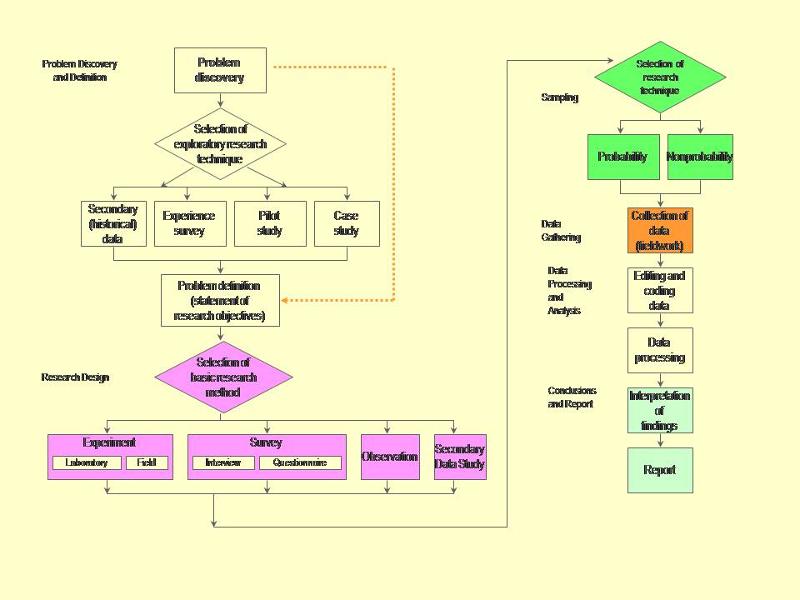
MARK 5320: Advanced Marketing Fundamentals
Chapter 10: Gathering and Using Information
This module covers marketing research and intelligence and the information systems that are used to manage the vast amount of data that results. Many marketing problems and opportunities can be solved by gathering information from a company's daily operations and analyzing it. Market intelligence involves gathering information on a regular, ongoing basis to stay in touch with what's happening in the marketplace. Marketing research is what a company has to resort if it can't answer a question that need to be answered by using market intelligence, internal company data, or analytical software. Marketing research is not infallible, however.
"You will not apply my precept," he said, shaking his head. "How often have I said to you that when you have eliminated the impossible, whatever remains, however improbable, must be the truth? We know that he did not come through the door, the window, or the chimney. We also know that he could not have been concealed in the room, as there is no concealment possible. When, then, did he come?"
The Sign of the Four, ch. 6 (1890)
Sherlock Holmes in The Sign of the Four (Doubleday p. 111)

This section discusses the components of a marketing information system, situations in which marketing research or marketing intelligence should be used, and the limitations of each. A marketing information system (MIS) is a way to mange the vast amount of information firms have on hand information marketing professionals and managers need to make good decisions. A MIS should have the following components: a system for recording internally generated data and reports, a system for collecting market intelligence on an ongoing basis, marketing analytics software to help managers with their decision making, a system for recording marketing research information.
Journal Article
Businesses generate a lot of information from daily business operations; such as sales and accounting data, information about inventory levels, backorders, customer returns and complaints. Firms also gather information related to their Web sites; such as clickstream data, which is data generated about the number of people who visit a web site and its various pages, how long they dwell there, and what they buy or don't buy.
Some companies use analytics software to gather all kinds of information from a company's database and then interpret the data based on what if questions presented by marketing managers; such as if we spend 10 percent more of our advertising on TV ads instead of magazine ads, what effect will it have on sales?.
Information about particular area of commercial activity a collection of internal and external data on a given market. Market intelligence focuses particularly on competitors, customers, consumer spending, market trends, and suppliers.
Ethics
This link is very interesting. Would you dumpster dive to help your company stay competitive.

First step in defining the problem is to make sure the actual problem is identified. Sometimes, companies don't look past the symptoms to see the real problem.
Research objective is the goal(s) the research is supposed to accomplish. The root cause of the problem is harder to identify than its obvious manifestations; for example, a decline in sales is a problem, but its underlying cause is what must be corrected. To define the problem, list every factor that may have influenced it, then eliminate any that cannot be measured. Examine this list while conducting research to see if any factors ought to be added, but don't let it unduly influence data collection. It has been said a problem well defined is a problem half solved.
Research Design outlines what data is going to be gathered, from whom, how and when it will be collected and how it will be analyzed. Two types of data:
Secondary data
Projective techniques used to reveal information research respondents might not reveal by being asked directly.
Finishing a sentence, story or word associations are examples of projective techniques. Also adding a caption to a cartoon.

Descriptive Research design involves gathering hard numbers, often via surveys, to describe or measure a phenomenon so as to answer the questions who, what, where, when and how. Physiological measurements, such as eye-tracking also fall into the category of descriptive research. Professor teaching evaluations are an example of descriptive research.
Causal Research Design examines cause-and-effect relationships; answering what if questions. Control of the setting is crucial in this research. Field, lab and virtual settings can be used with adequate controls.
Standardized collection forms should be used.
Questionnaire design is extremely important to yield reliable results:
Samples
Examples
Wall of Shame - poor questions
Steps for specifying a sample: identifying a sample or subset of potential buyers that are representatives of target market and putting together a sampling frame or list from which the sample of respondents.
Sampling
Be sure to click on the key terms.
Selecting a method
Once all the data is collected, data cleaning begins. This is the process of removing data that has accidentally been duplicated or correcting data that obviously been recorded wrong.
Software programs can then tabulate basic results of the research such as the total number of participants and how collectively they answered various questions. Results should be evaluated for validity (it actually tested what it was meant to) and reliability (results are repeatable).